A Tapas Tour of Logroño City, La Rioja
I’ve already written a fair bit about La Rioja tapas culture in my piece for Great British Chefs, but I just wanted to write a bit of an add on post with a few more dishes and notes than I had space to include in my article over there. I’ll save the tapas I ate the afternoon I was in San Sebastián for my post on the city, but I here are some of my notes and photos from Thursday and Friday nights eating out in the streets of Logroño.
I’m usually not one for loud and crowded places, so I was surprised how much I loved the buzz and energy of Calle Laurel (the main tapas street) and its surrounding streets at night. Tapas is social, sharing food meant, when the weather permits to be eaten out in the streets gathered around tables and old wine barrels at the entrance to the tapas bars where you could rest your plates of simple and delicious local food and glasses of Rioja. For the Spanish, wine goes with food. As far as finding a drink to just simply enjoy without an edible accompaniment, the Spanish also love their G&T’s. Head to Calle de Bretón for bathtub triple gins in great big goblets, drunk out sitting around tables in the street until the small hours.
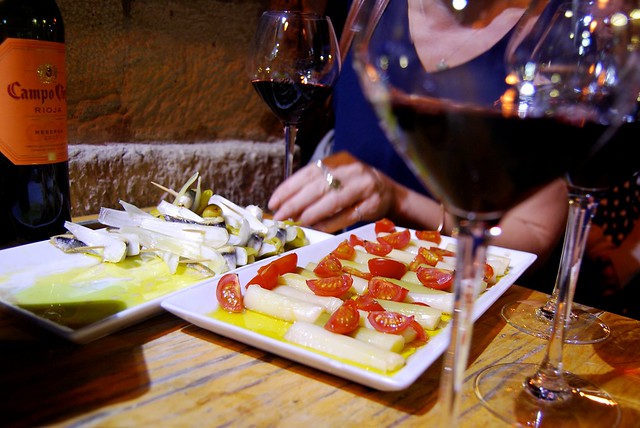
Our first plate of dishes, right off the plane were actually among some of my favourite. First, baby leeks poached and doused in red wine vinaigrette, served on a dish of some fantastic Spanish Olive Oil, and with some only just slightly roasted (you can do this in a dry pan) cherry tomatoes. We were given little forks to eat these with, and there was bread to soak up all of the delicious juices from both dishes. So simple, but with such bright, fresh and vibrant flavours. If someone were to describe the dish to you, you’d think that you ought to pair it with a nice chilled white, or a rosé, but the red wine vinaigrette makes it so that a nice local red is actually the perfect pairing.
Also, we had our first pintxos, which literally translates as ‘spikes’ or ‘thorns’. They’re a dish popular in the region on sticks; true ‘tapas’ is actually things on bread. But anyway, we had onions, white anchovies, olives and pickled padrón peppers, again in olive oil, which roughly translates as the best thing in my book ever to happen to an anchovy. I loved the way the Spanish prepare their onions for tapas, pintxos and salads, soaked for three hours in cold water until they are sweet and without that unwanted tang.
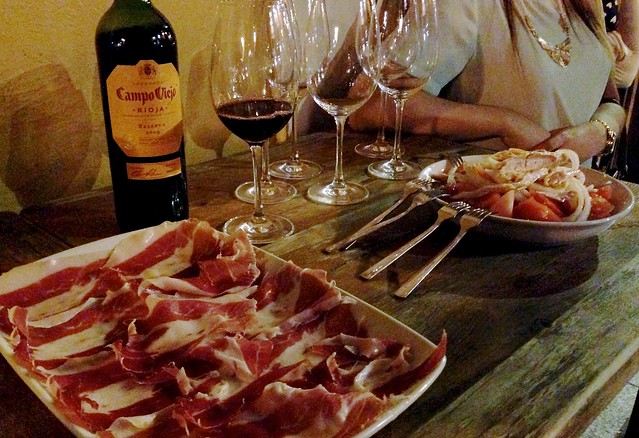
It is typical to bar hop for your food, so next we headed up and across the street for all manner of goodies. I’ve pictured the jamón with melt in the mouth fat, and tomato salad here as it was mostly what I ate, but there were other dishes too. The others loved the massive croquetas of cheese and chorizo I was not able to eat, and I was a particular fan of the thins of baked bread topped off with simple anchovies.
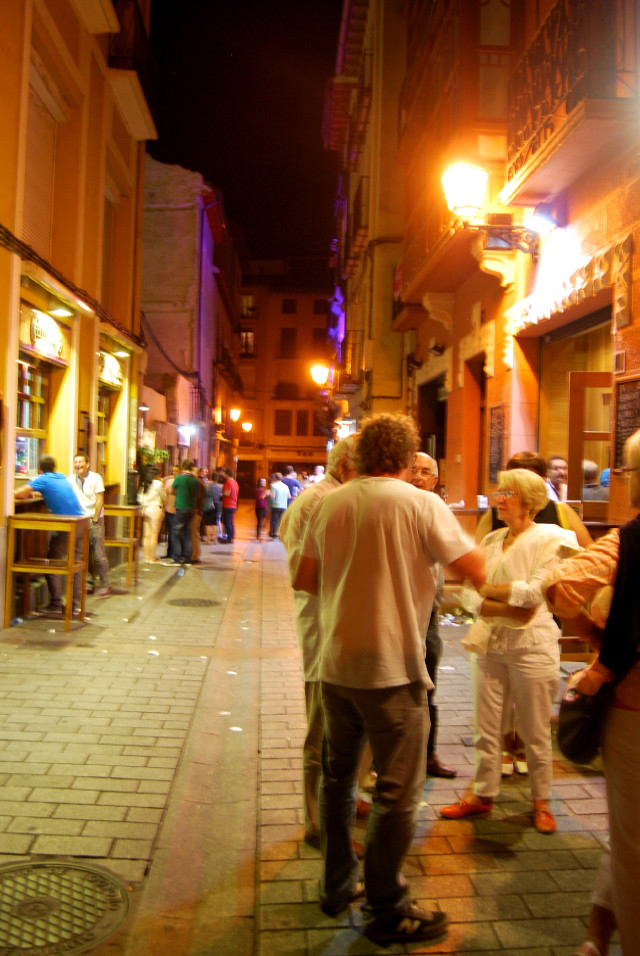
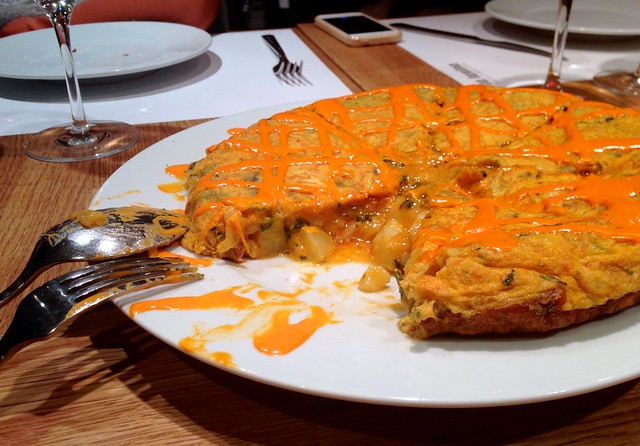
The next night we actually started off sitting inside a bar with a simply fantastic world wine collection called La Tavina. It was here we ate dangerously more-ish slabs of boiled pigs cheek skin doused in rough sea salt (the worlds best pork scratching) and fat wedges of oozy tortilla with chorizo, spinach and piminto. I’ve always seen a Spanish tortilla as an okay sort of dish, but after discovering how it is meant to be eaten, still soft and eggy in the middle, I’m become a total convert and I think they are among some of the best things I ate.
Next we moved onto the second tapas bar we headed to the night before for more of their delicious tomato salads. The owner grows all the tomatoes himself on his farm. They’re fat, delicious and blow the tomatoes you buy in British supermarkets clean out of the water. As well as the sweet soaked onions, they were also doused in local olive oil, a good sprinkling of salt (tomatoes natural bedfellow) and topped off with a light Spanish tuna from the belly of the fish, similar in taste, colour and texture to Albacore.
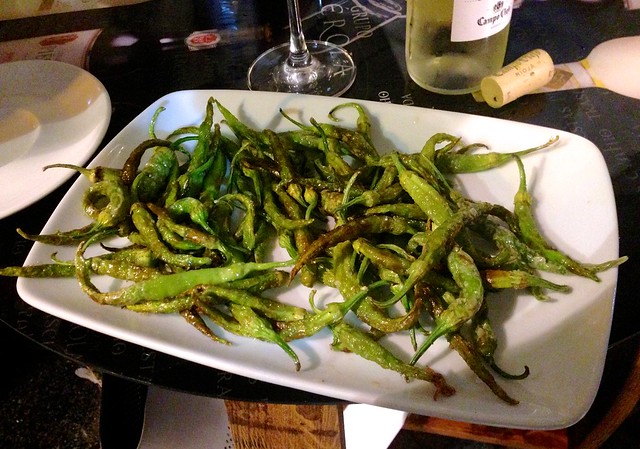
Next up, we have one of my surprise favourites from the trip: Padrón peppers (again grown by the bar owner on his farm), blistered in good olive oil, doused in salt and served up hot. Surprisingly enough, the smaller they are the least spicy. I did not get a particularly hot one, but there were some fun expressions on other peoples faces! These are pretty popular with drinks around the region; we were also served them as part of our aperitif at Rekondo (with more croquetas, this time Rachel friendly) the next night.

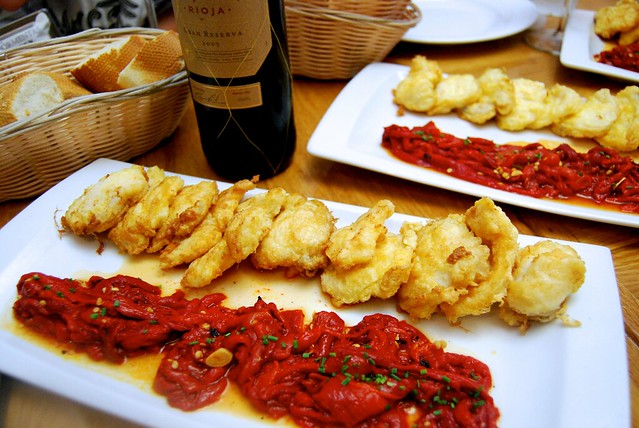
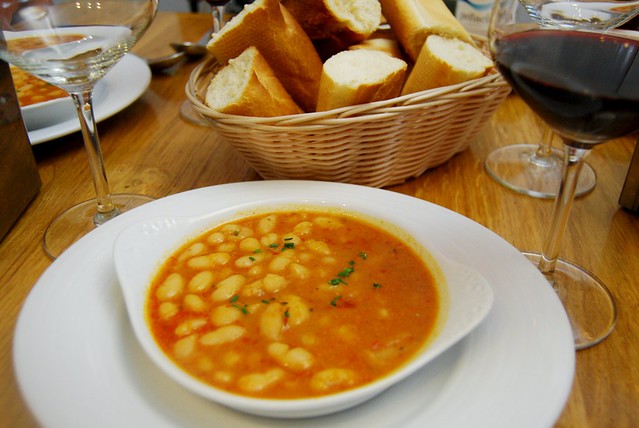
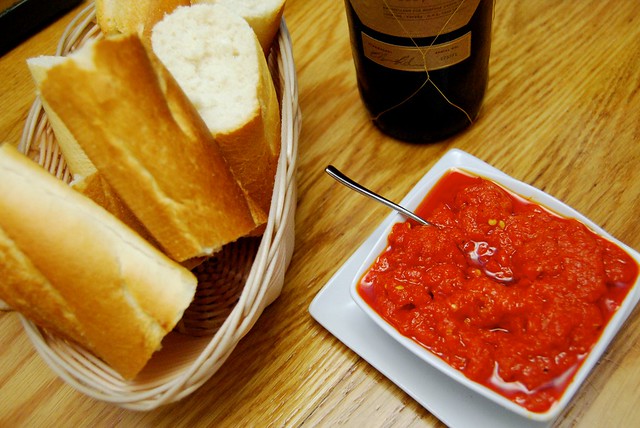
We finished off inside a bar for yet more wine (obviously) and a couple more dishes. Pieces of Monkfish were battered and fried to be served with slithers of roasted red peppers and olive oil, and we each got our own little dish of a simply delicious fresh bertolli beans cooked in tomato sauce, garlic and chorizo, a dish I really want to replicate. The red pepper sauce that was designed to be mixed in with the beans was the thing that got me, wow that was spicy! I gave adding any of it to my dish a miss.
I was totally taken by surprise by tapas in La Rioja; the whole culture was about a lot more than just the things you eat, and it really got me thinking about the rituals behind the things we eat and how we eat them in different cultures; the Spanish tapas bar, the Great British Pub, or fish and chips at the seaside; that sort of thing. The food from my trip also has me wishing to add a good, solid Spanish cookbook to my collection, so I’d love to hear all of your recommendations. I’ve heard good things about Tapas Revolution, and I’m quite tempted by the Barrafina book, too. Or, should I just go down the trusted and traditional route, and order a copy of Claudia Roden’s The Food Of Spain? I find her Italian and Jewish books invaluable.
I traveled to La Rioja as a guest of Campo Viejo.

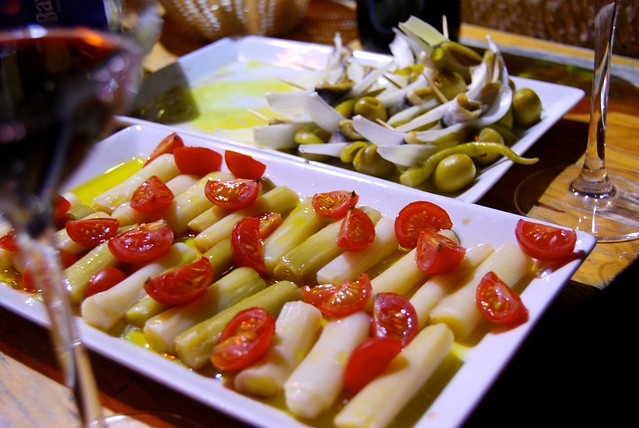

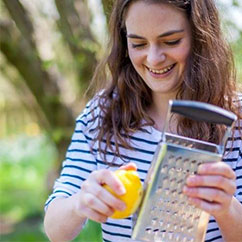
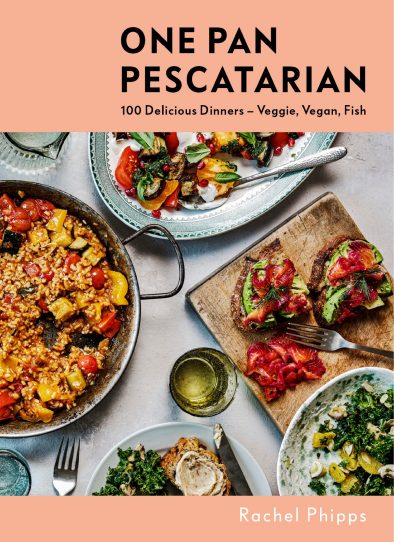
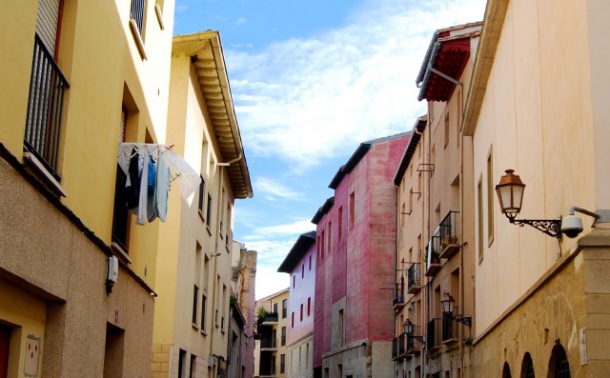
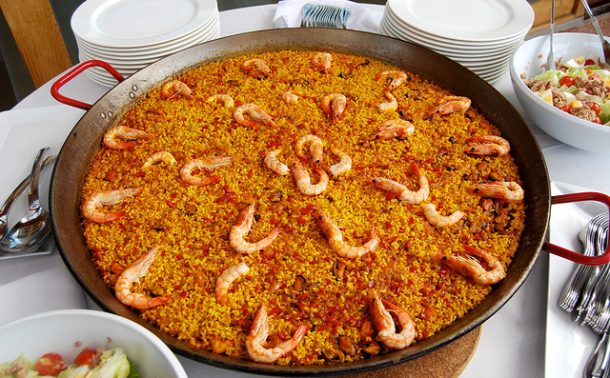

Discussion